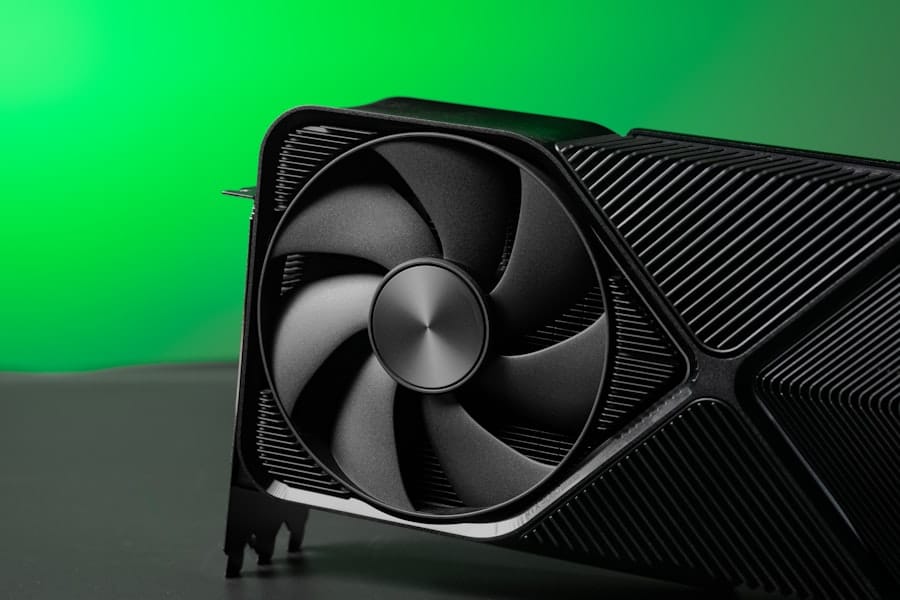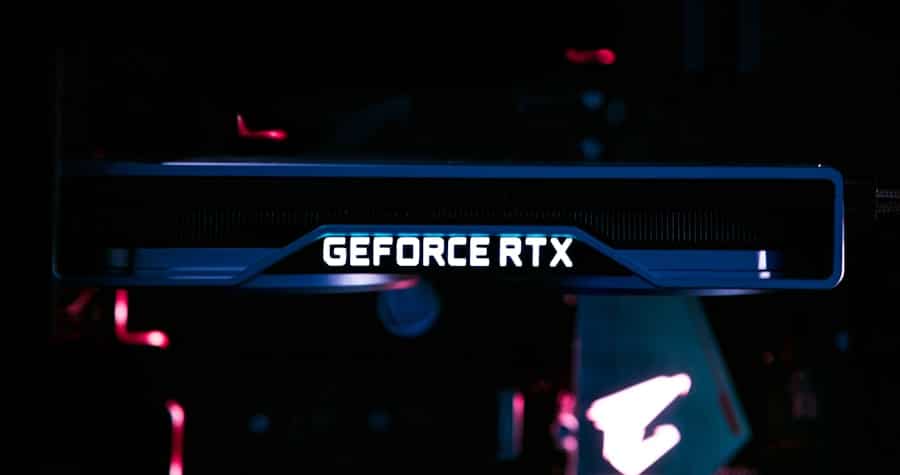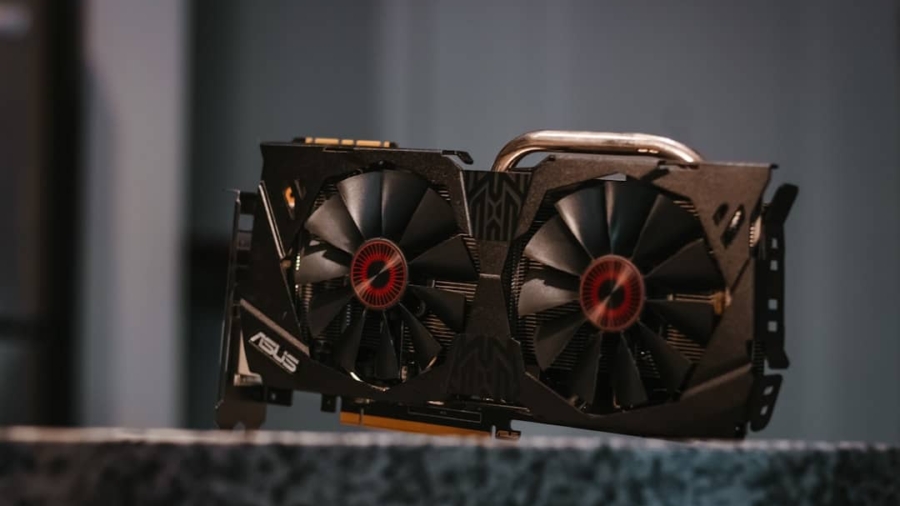NVIDIA and AMD are two titans in the graphics processing unit (GPU) market, each with a storied history and a loyal following. NVIDIA, founded in 1993, has long been synonymous with high-performance graphics, particularly in the realms of gaming and professional visualization. Its GeForce line of GPUs has set benchmarks for performance and innovation, introducing technologies such as real-time ray tracing and DLSS (Deep Learning Super Sampling).
On the other hand, AMD, established in 1969, has carved out its niche with a focus on value and performance, particularly through its Radeon series. The rivalry between these two companies has driven significant advancements in GPU technology, benefiting consumers with improved performance, efficiency, and features. As we look toward 2025, the competition between NVIDIA and AMD is expected to intensify further.
Both companies are investing heavily in research and development to push the boundaries of what is possible in graphics technology. With the rise of high-resolution displays, virtual reality, and artificial intelligence applications, the demand for powerful GPUs is greater than ever. This article will explore the evolution of gaming benchmarks, performance comparisons, pricing strategies, power consumption, future trends, and user experiences to provide a comprehensive overview of the GPU landscape in 2025.
Key Takeaways
- NVIDIA and AMD are two major players in the GPU market, known for their high-performance graphics cards.
- Gaming benchmarks have evolved over the years, from focusing solely on frame rates to including factors like ray tracing and AI-enhanced graphics.
- In 2025, performance comparison shows that NVIDIA’s GPUs have an edge over AMD’s in terms of raw power and advanced features.
- Price comparison in 2025 reveals that AMD’s GPUs offer better value for money compared to NVIDIA’s high-end offerings.
- Power consumption and efficiency are important factors to consider, with NVIDIA leading in energy efficiency and AMD focusing on performance per watt.
Evolution of gaming benchmarks
The evolution of gaming benchmarks has been a critical aspect of the GPU industry, serving as a standardized method to evaluate performance across different hardware configurations. In the early days of gaming, benchmarks were often informal and based on subjective experiences. However, as games became more complex and demanding, the need for standardized testing became apparent.
This led to the development of various benchmarking tools and methodologies that could objectively measure frame rates, rendering quality, and overall performance. By 2025, gaming benchmarks have evolved significantly to include a wide range of metrics that reflect real-world gaming scenarios. Modern benchmarks now assess not only raw frame rates but also factors such as latency, thermal performance, and power efficiency.
Tools like 3DMark and Unigine Heaven have become industry standards, providing gamers and reviewers with reliable data to compare different GPUs. Additionally, game developers have begun to incorporate built-in benchmarking tools within their titles, allowing players to test performance under specific conditions tailored to their games. This evolution has empowered consumers to make informed decisions when selecting a GPU that meets their gaming needs.
Performance comparison in 2025

As we delve into the performance comparison between NVIDIA and AMD in 2025, it is essential to consider various factors that contribute to overall GPU performance. By this time, both companies have released their latest architectures—NVIDIA with its Ada Lovelace successor and AMD with its RDNA 3 architecture—each boasting significant improvements over their predecessors. NVIDIA’s GPUs are expected to excel in ray tracing performance due to their advanced RT cores and AI-driven features like DLSS 3.0, which enhances frame rates without sacrificing visual fidelity.
Conversely, AMD’s RDNA 3 architecture focuses on delivering high performance at competitive price points. With enhancements in shader efficiency and memory bandwidth, AMD GPUs are anticipated to perform exceptionally well in traditional rasterization tasks while also making strides in ray tracing capabilities. In real-world gaming scenarios, titles optimized for NVIDIA’s technologies may show a clear advantage in ray tracing-heavy environments.
However, AMD’s GPUs could shine in scenarios where raw rasterization performance is prioritized. The performance landscape in 2025 will likely see both companies catering to different segments of the gaming market, with NVIDIA appealing to enthusiasts seeking cutting-edge features and AMD targeting budget-conscious gamers who still demand high performance.
Price comparison in 2025
Price remains a crucial factor for consumers when choosing between NVIDIA and AMD GPUs. As of 2025, both companies have adopted different pricing strategies that reflect their target demographics and market positioning. NVIDIA’s high-end offerings are expected to maintain premium pricing due to their advanced features and superior performance in specific applications like ray tracing and AI-driven tasks.
The introduction of new technologies often comes at a cost; thus, consumers looking for top-tier performance may need to invest significantly more in NVIDIA’s flagship models. In contrast, AMD has historically positioned itself as a value-oriented alternative without compromising on performance. By 2025, AMD’s pricing strategy is likely to continue this trend, offering competitive mid-range options that deliver excellent performance for gamers who do not require the absolute best specifications.
This approach allows AMD to capture a larger share of the market by appealing to budget-conscious consumers who prioritize value over cutting-edge features. The price comparison between NVIDIA and AMD will ultimately depend on individual preferences; gamers seeking the latest technology may lean towards NVIDIA, while those looking for solid performance at a more accessible price point may find AMD’s offerings more appealing.
Power consumption and efficiency
Power consumption and efficiency are increasingly important considerations for gamers and PC builders alike. As GPUs become more powerful, they also tend to consume more power, leading to concerns about heat generation and energy costs. By 2025, both NVIDIA and AMD have made significant strides in improving the power efficiency of their GPUs through advanced manufacturing processes and architectural innovations.
NVIDIA’s latest GPUs are expected to utilize a refined version of their existing process technology, allowing for higher performance per watt compared to previous generations. AMD’s RDNA 3 architecture is also designed with power efficiency in mind, leveraging a smaller manufacturing node that enhances performance while reducing power consumption. This focus on efficiency not only benefits gamers by lowering electricity bills but also contributes to better thermal management within PC builds.
As a result, users can expect quieter operation and less reliance on robust cooling solutions when using these next-generation GPUs. The competition between NVIDIA and AMD in this area will likely lead to further innovations aimed at maximizing performance while minimizing power draw.
Future trends and advancements

Looking ahead to the future trends and advancements in GPU technology beyond 2025 reveals an exciting landscape filled with potential breakthroughs. One significant trend is the continued integration of artificial intelligence into graphics processing. Both NVIDIA and AMD are investing heavily in AI-driven technologies that enhance gaming experiences through features like dynamic resolution scaling, improved image quality, and smarter resource allocation during gameplay.
This trend is expected to redefine how games are developed and played, creating more immersive experiences for users. Another area poised for growth is the expansion of cloud gaming services. As internet speeds improve globally and latency issues are addressed, cloud gaming platforms will become increasingly viable alternatives to traditional gaming setups.
This shift could alter the competitive landscape between NVIDIA and AMD as both companies explore partnerships with cloud service providers or develop dedicated hardware optimized for cloud gaming environments.
User experience and feedback
User experience plays a pivotal role in determining the success of any GPU brand or model.
NVIDIA’s GeForce Experience software has been well-received for its user-friendly interface that allows gamers to optimize game settings automatically based on their hardware capabilities.
Additionally, features like Game Ready Drivers ensure that users receive timely updates tailored for new game releases. On the other hand, AMD has made significant strides with its Radeon Software Adrenalin Edition, which offers similar optimization features along with robust monitoring tools that allow users to track performance metrics in real-time. Community feedback indicates that both software solutions have improved over time; however, some users still report occasional issues with driver stability or compatibility with specific titles.
As both companies continue to refine their software offerings based on user feedback, it will be interesting to see how they address these concerns while enhancing overall user experience.
Which GPU is the winner in 2025?
As we approach 2025, determining which GPU reigns supreme between NVIDIA and AMD involves considering various factors such as performance metrics across different gaming scenarios, pricing strategies that cater to diverse consumer needs, power consumption efficiencies that impact long-term operational costs, future technological advancements that could reshape the industry landscape, and user experiences shaped by software ecosystems surrounding these products. While NVIDIA may hold an edge in cutting-edge features like ray tracing due to its established technology stack, AMD’s commitment to delivering value-oriented solutions ensures it remains a formidable competitor. Ultimately, the “winner” will depend on individual preferences—gamers seeking top-tier performance may gravitate towards NVIDIA’s offerings while those prioritizing value without sacrificing quality may find themselves drawn to AMD’s competitive pricing structure.
As both companies continue innovating within this dynamic market landscape characterized by rapid technological advancements and shifting consumer demands, the rivalry between NVIDIA and AMD promises to yield exciting developments for gamers worldwide well into the future.
If you’re interested in exploring more tech-related topics, you should check out this article from Hacker Noon that covers a range of topics across the tech sector here. It’s always fascinating to stay updated on the latest trends and advancements in technology, especially when it comes to gaming benchmarks like the ongoing battle between NVIDIA and AMD in 2025.
FAQs
What are the key differences between NVIDIA and AMD GPUs in 2025?
In 2025, NVIDIA and AMD GPUs differ in their architecture, performance, power efficiency, and pricing. NVIDIA GPUs are known for their advanced ray tracing capabilities and AI-driven features, while AMD GPUs are recognized for their competitive pricing and strong performance in certain workloads.
Which GPU brand is leading in gaming benchmarks in 2025?
The leading GPU brand in gaming benchmarks in 2025 depends on the specific games and benchmarks being used. Both NVIDIA and AMD have released competitive GPUs with varying strengths and weaknesses, making it important to consider individual gaming preferences and requirements.
What are the key factors to consider when choosing between NVIDIA and AMD GPUs for gaming in 2025?
When choosing between NVIDIA and AMD GPUs for gaming in 2025, key factors to consider include performance in specific games, ray tracing capabilities, power efficiency, pricing, and compatibility with other hardware and software components.
How do NVIDIA and AMD GPUs compare in terms of ray tracing performance in 2025?
In 2025, NVIDIA GPUs are generally considered to have superior ray tracing performance compared to AMD GPUs. NVIDIA’s RTX series GPUs have dedicated hardware for ray tracing, enabling more efficient and realistic rendering of lighting and reflections in games that support the technology.
What advancements have NVIDIA and AMD made in GPU technology by 2025?
By 2025, both NVIDIA and AMD have made significant advancements in GPU technology, including improvements in architecture, performance, power efficiency, and features such as ray tracing and AI-driven capabilities. These advancements have led to more immersive gaming experiences and enhanced productivity for various workloads.

